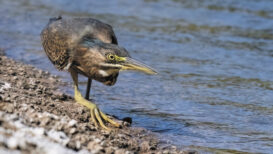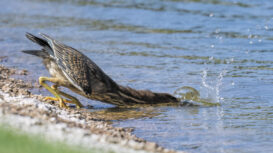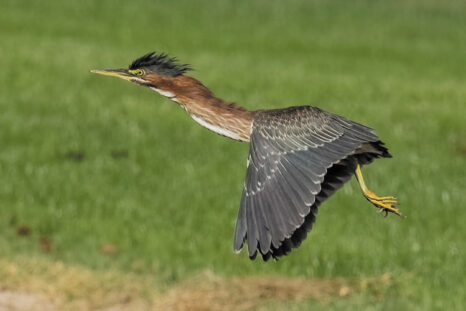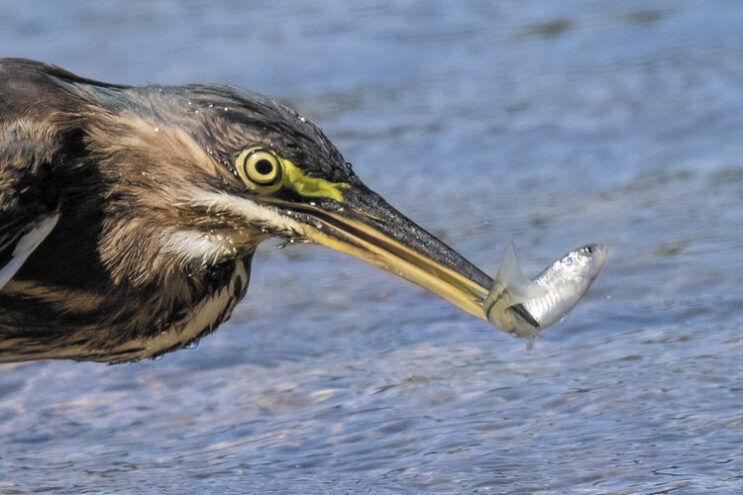Jim Hoagland
November marks the beginning of many migratory bird species visiting our pond at SaddleBrooke Ranch (SBR). Some species stay for short periods, and others for several days or even months, like the American Wigeons, which stay here through mid-March. Although a few species, such as Green-winged Teal and Cinnamon Teal, along with the Green Heron and Belted Kingfisher, were visitors of our pond in October, it is in November and December that our activity will increase manyfold. I have been keeping records through eBird, Cornell University’s citizen science project, and have recorded over 70 species around the pond in November.
Waterfowl species expected to be seen in the next couple of months and beyond include Bufflehead, Northern Shovelers, Ring-necked Duck, Blue-winged Teal, American Coots, Green-winged Teal, American Widgeon, Mallard, Mexican Duck, Ruddy Duck, along with the Pied-billed Grebe and Western Grebe. Other notable species visiting our pond during this time include Ring-billed Gull, Spotted Sandpiper, Black Phoebe, American Pipit, Great Egret, and Great Blue-Heron.
This month, I would like to feature the Green Heron seen along the SBR pond’s edge during these fall months. When someone says they saw a heron on the pond, it probably was a Great Blue-Heron or a Black-crowned Night Heron. The herons are in the Ardeidae family and include egrets and bitterns. In all, 75 species of this family are currently recognized. The Green Heron is found in the genus of Butorides along with the Striated Heron. There is no difference between the plumages of the male and female.
The Green Heron is a relatively small, dark, compact wading bird with a crested head. Usually, they are found in wetland thickets throughout much of North America. If you carefully observe it, you will see it stalking slowly along the edge of our pond, mostly in a crouched position, waiting for fish in the shallow water. When their prey is seen, it captures it with a darting stroke of the head and neck, often with a body lunge. They generally grasp their prey with their bill but may sometimes spear it.
Green Herons are a true testament to the ingenuity of the avian world. They are among the few tool-using birds, fabricating various baits that entice fish to where they can grab them. They will sometimes put pieces of bread, feathers, or mayflies on the water’s surface to attract fish. Another technique I have witnessed here at the Ranch pond is the Green Herons spreading their wings, turning them into an umbrella to create a shadow on the water, which attracts the fish that seek cooler areas to escape the heat.
December is the start of the annual Christmas Bird Count, which has been conducted since 1900. Volunteers from across North America and beyond take to the field during one calendar day between Dec. 14 and Jan. 5 to record every bird species and individual bird encountered within a designated 15-mile diameter circle. One of the closest Christmas Bird Count to us is the Dudleyville Circle, conducted on Jan. 3, 2026. It is the 26th year for the Dudleyville Circle count. If you are interested in taking part, please contact me.




